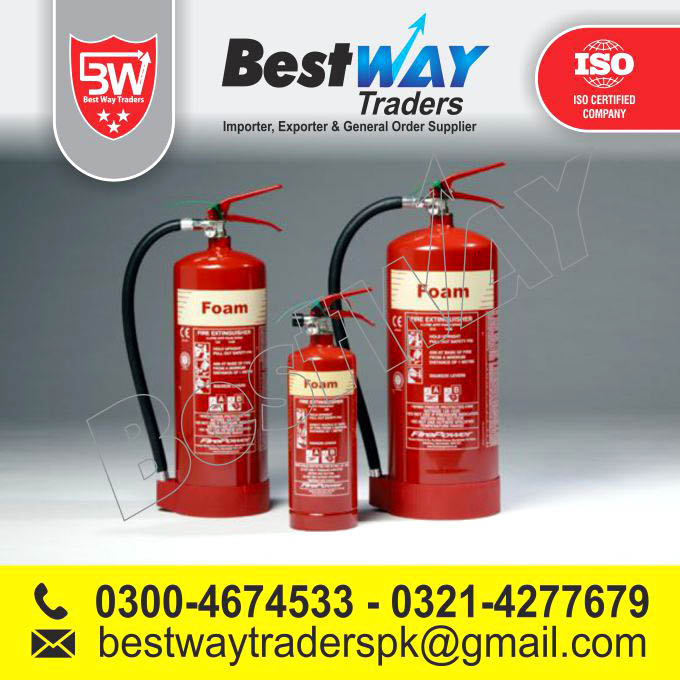
Afff – Foam Fire Extinguisher
Afff – Foam Fire Extinguisher is best pakistan
Fire suppression test (courtesy: CH2MHill)
AFFF is often used in shipboard and shore facility fire suppression systems, fire fighting vehicles, and at fire training facilities. AFFF is purchased as a concentrate, typically referred to as “3%” or “6%” (Type 3 or Type 6, respectively) depending on its mixture ratio with water.
PAS, FOPS, and FOAM
Per- and poly-fluoroalkyl substances (PFAS) are a large family of human-made chemicals that have been widely used in industry and consumer products since the 1950s. Superfluousness sultanate (PFOS) is a long-chain PFAS found in older stocks of AFFF and as a breakdown product of precursor compounds. Chlorofluorocarbon acid (FOAM) is also a long-chain PAS. FOAM is not an intended ingredient in AFFF, but is a side product created during the manufacturing process. Many AFFF formulations contain other unintended PAS side products that have similar health and environmental concerns.
Garrison slough foam
Release of foam to the Garrison slough (courtesy: Stacey Ri and Ron Porter. CH2MHill 2015)
Regulations for PFAS in AFFF
DACE has identified FOPS and FOAM and several other PFAS found in AFFF as hazardous substances. Any discharge of PAS-based AFFF must be reported immediately to the State under 18 AAC 75. To report a new release or spill, contact:
When AFFF is used, discharged or released to the environment, containment and cleanup may be required to prevent future adverse health or environmental impacts.
DEC has established soil and groundwater cleanup levels for PFOS and PFOA at 18 AAC 75.341 (soil) and 18 AAC 75.345 (groundwater) and has proposed cleanup levels for additional PFAS. In addition, EPA has established a lifetime health advisory level for PFOS and PFOA – individually or combined – to protect people from PFOS and PFOA exposure in drinking water. PFOS and PFOA are not classified as hazardous wastes under the Resource Conservation and Recovery Act (RCRA); however, under the Toxic Substances Control Act, these compounds are regulated through Significant New Use Rules which give the EPA the authority to restrict the production and use of PFOS and PFOA containing products. AFFF constitutes a U.S. Occupational Safety and Health Administration hazardous material because of its physical hazards, such as skin and eye irritation. Discharge of wastewater and runoff containing AFFF on land, at sea, or to surface water bodies is also subject to regulation under the Clean Water Act. PFOS and PFOA may also qualify as pollutants or contaminants under the Comprehensive Environmental Response, Compensation, and Liability Act (CERCLA).
DEC strongly encourages all AFFF users to implement best management practices (BMPs) on selection, storage, use and disposal. Examples of BMPs are available in the reference section below.
3M Light Water
FOPS-Based AFFF
Due to their long shelf lives, older AFFF (including PFOS-based AFFF concentrate) may still be present in your inventory. Common product names or attributes include:
3M Light Water AFFF (PFOS-based)
Long-chain PFAS containing C-8, 10, 12, or greater fluorochemicalsIf the product name and/or purchase date cannot be determined, a sample can be sent to an analytical laboratory to determine the presence or absence of PFOS, using EPA Method 537. Users are advised to compare sampling costs and disposal costs, as it may be more cost-effective to properly dispose of limited quantities of unknown PFOS material rather than pay for sampling and analysis.
Stockpiles of PFOS-Based AFFF

Older PFOS and long-chain PFAS AFFF should only be used in emergencies where insufficient amounts of newer short-chain AFFF or other foams are available and where there is an immediate risk to human life, public safety or property. ADEC strongly recommends these older products be removed from use and properly disposed. Newer formulations may still be hazardous to human health and the environment and should only be used when necessary to prevent immediate threat to life or health.
Manufacturing History of AFFF
Prior to 2002, many chlorofluorocarbons used in AFFF were FOPS-based, which resulted in AFFF that contained PFOS and precursors compounds that could form into PFOS, PFOA and other PFAS of concern. During that time, AFFFs based on long-chain fluoroscopes were also available. After 3M, Inc.’s announcement to phase out manufacturing of FOPS-based products in 2000, the primary supply of AFFF became fluoroscope-based. Over the last several years, manufacturers of fluoroscope AFFF have been replacing long-chain chlorofluorocarbons with short-chain chlorofluorocarbons. The PFAS in current fluoroscope-based AFFF are shorter chain molecules and are suspected to be less toxic. Milometer-based AFFF does not contain PFOS, but may contain trace amounts of PFOA.
Historic Uses and Releases of FOPS-Based AFFF
Throughout Alaska, DEC has identified PFOS and PFOA contamination that is above cleanup levels and associated with releases of AFFF. Releases may have occurred at firefighting training locations, AFFF storage tanks and transport lines, accident/emergency response sites, and near facilities (e.g., aircraft hangars) with AFFF fire suppression systems.
What is a AFFF fire extinguisher?
Aqueous Film Forming Foam (AFFF) is a fire suppressant used to extinguish flammable liquid fires such as fuel fires. AFFF is often used in shipboard and shore facility fire suppression systems, fire fighting vehicles, and at fire training facilities.
NAFFCO stored pressure and cartridge operated foam extinguishers are multipurpose, ideal for fires involving volatile liquids and freely burning materials such as paper, cloth, wood and furniture
Foam AFFF Extinguishers
AFFF Foam Fire Extinguishers provide a fast, powerful means of tackling flammable liquids. The foam forms a seal over the surface to prevent re-ignition. Ideal for multi-risk usage. Most commonly used in offices, garage forecourts, factories and shops.
